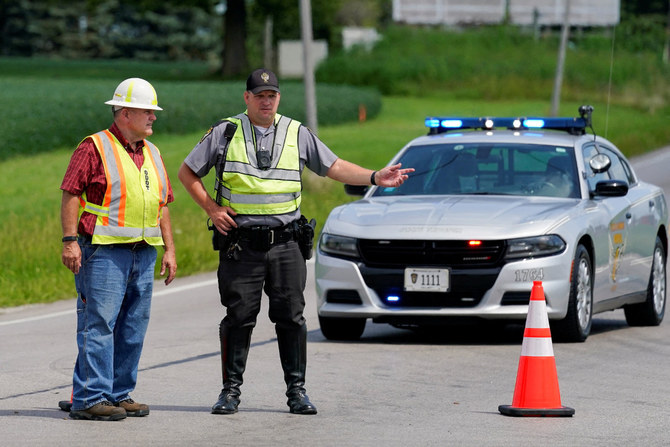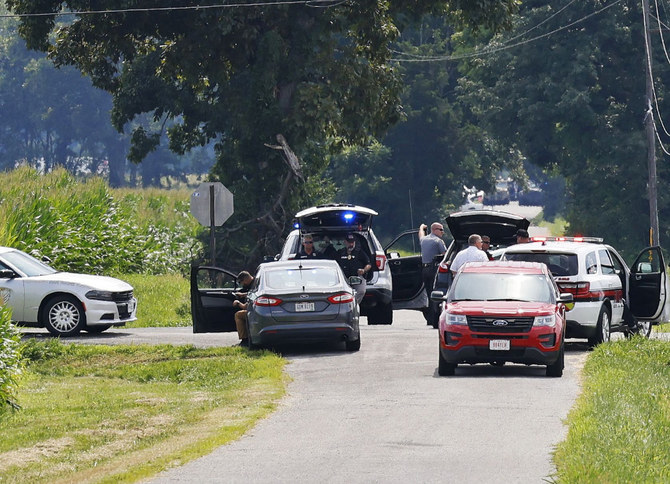COLUMBUS, Ohio: A gunman who died in a shootout after trying to get inside the FBI’s Cincinnati office apparently went on social media and called for federal agents to be killed “on sight” following the search at former President Donald Trump’s home, a law enforcement official said.
Federal investigators are examining social media accounts they believe are tied to the gunman, 42-year-old Ricky Shiffer, according to the official, who was not authorized to discuss the investigation publicly and spoke to The Associated Press on condition of anonymity.
At least one of the messages on Trump’s Truth Social media platform appeared to have been posted after Shiffer tried to breach the FBI office. It read: “If you don’t hear from me, it is true I tried attacking the F.B.I.”
Another message posted on the same site this week from @rickywshifferjr included a “call to arms” and urged people to “be ready for combat” after the FBI search at Trump’s Mar-a-Lago estate in Florida.
Authorities also are looking into whether Shiffer, a Navy veteran, had ties to far-right extremist groups such as the Proud Boys, the official said.
Shiffer was armed with a nail gun and an AR-15-style rifle when he tried to breach the visitor screening area at the FBI office Thursday, according to the official. Shiffer fled when agents confronted him.
He was later spotted by a state trooper along a highway and got into a gunbattle that ended with police killing him, authorities said.
The burst of violence unfolded amid FBI warnings that federal agents could face attacks following the search in Florida.
The FBI is investigating what happened in Cincinnati as an act of domestic extremism, according to the law enforcement official.
Shiffer is believed to have been in Washington in the days leading up to the Jan. 6, 2021, insurrection and may have been at the Capitol that day but was not charged with any crimes in connection with the riot, the official said.
Officials have warned of a rise in right-wing threats against federal agents since the FBI entered Trump’s estate in what authorities said was part of an investigation into whether he took classified documents with him after leaving the White House. Supporters of the former president have railed against the search, accusing the FBI and the Justice Department of using the legal system as a political weapon.
FBI Director Christopher Wray denounced the threats as he visited an FBI office in Omaha, Nebraska, on Wednesday, saying, “Violence against law enforcement is not the answer, no matter who you’re upset with.”
The FBI on Wednesday also warned its agents to avoid protesters and ensure their security key cards are “not visible outside FBI space,” citing an increase in social media threats against bureau personnel and offices.
A now-suspended Twitter account, @rickyshiffer, shared the same profile picture as the Truth Social account and similar opinions, including a call for armed conflict in the US this past spring.
It included posts saying that “elections are rigged” against conservatives and that the country faces “tyranny.”
“I don’t think it’s a one-off incident,” said Amy Cooter, a researcher at Middlebury College who is an expert on militias. “I’m afraid there’s going to be a pocket full of people who feel compelled to act.”
Courthouses, government offices and election headquarters all could be targets, she said. “Anywhere is fair game now because these folks feel this a personal issue for them,” Cooter said.
Shiffer worked as an electrician, according to one of his social media profiles. He was a registered Republican who voted in the 2020 primary from Columbus, Ohio, and in the 2020 general election from Tulsa, Oklahoma, according to public records.
Court records show the Ohio Department of Taxation filed suit against him in June, seeking a $553 tax lien judgment, according to court records listing him at an address in St. Petersburg, Florida. He also previously lived at several addresses in Columbus and in Omaha, Nebraska.
He graduated from high school in central Pennsylvania in 1998 and enlisted in the Navy that same year, later serving on the USS Columbia submarine until 2003, according to military records. He was an infantry soldier in the Florida Army National Guard from 2008 to 2011, when he was honorably discharged.
“I know he was way into World War II and the military,” said Lori Frady, a classmate at West Perry High School in Elliottsburg, who had not seen Shiffer since graduation. “He didn’t have a lot of friends, but the friends he did have were big into history and military history.”


















